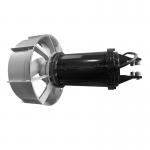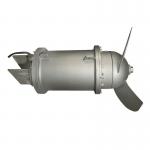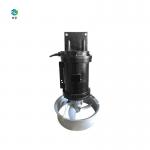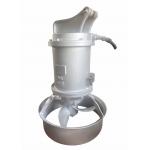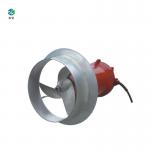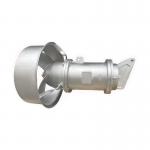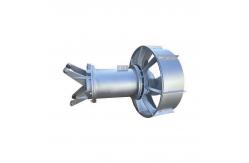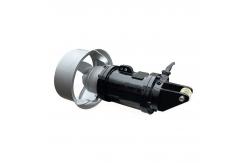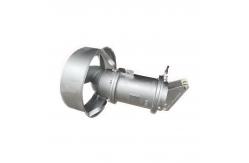Submersible mixers can be divided into two types: hybrid submersible mixers and
low-speed submersible propulsion mixers. The hybrid submersible
mixer usually adopts a multi pole motor and a direct connection
structure, which has the characteristics of low energy consumption
and high efficiency. Its impeller is precision cast or stamped,
with high precision, high thrust, beautiful and smooth appearance,
and compact structure. The low-speed submersible propulsion mixer
adopts a cycloidal pinwheel reducer or gear reducer, equipped with
low power, low speed, large impeller diameter, and wide service
area. The impeller is made of polyurethane material and aluminum
alloy (some also use fiberglass material), which has the
characteristics of high strength and strong corrosion resistance.
In addition to stirring, it can also have the functions of pushing
and creating water flow.
Application
Submersible mixers are widely used in the process flow of sewage
treatment plants to promote the mixing of wastewater containing
suspended solids, dilute slurry, industrial process liquids, etc.,
create water flow, enhance mixing function, prevent sludge
sedimentation and blind spots. Submersible thrusters are mainly
used for aeration tank 1 in sewage treatment plants.
Selection and Installation
The selection of a submersible mixer needs to consider factors such
as pool type (pool length x width x height and water depth) and the
characteristics, viscosity, density, and solid content of the
mixing medium. During installation, attention should be paid to the
guide rod and horizontal and vertical alignment. When lifting the
submersible mixer, the impeller end should be tilted 5-10 above the
horizontal plane. By adjusting the chain on the lifting device, the
submersible mixer can slide down along the guide rod or guide wire,
and the lifting center of gravity of the lifting hook and
submersible mixer should be on the same vertical line.
Maintenance and upkeep
Under specified conditions, the average operating time of the
submersible mixer before failure is not less than 15000 hours, and
the overall service life of the machine is not less than 20 years.
In order to ensure the normal operation of the submersible mixer,
regular maintenance and upkeep are required, including checking the
reliability of the mechanical seal, the condition of the cable
sealing head, and the insulation level of the motor winding.
In summary, the submersible mixer is an important equipment in the
sewage treatment process. Through its unique design and efficient
mixing capacity, it can effectively treat suspended solids and
sludge in sewage, ensuring the quality and efficiency of sewage
treatmen
